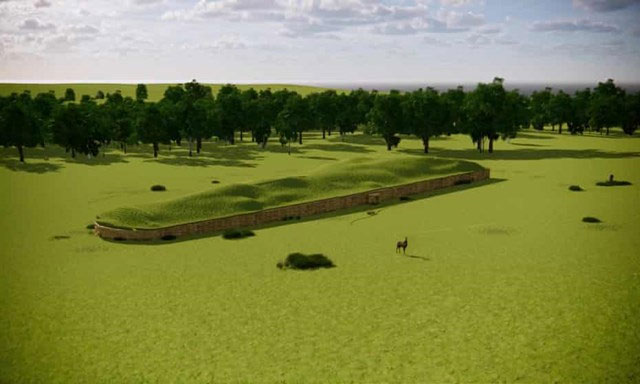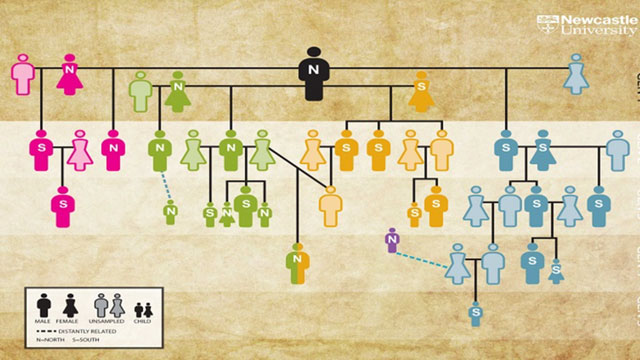DNA analysis from a 5,700-year-old tomb has uncovered the oldest family tree in the world, shedding light on the critical role of family and lineage among the first farmers in England.

Illustration of Hazleton North long cairn provided by Corinium Museum. (Photo: The Guardian).
A research team examined the bones and teeth of 35 skeletons from one of the best-preserved stone age tombs in England, located near the village of Hazleton in the Cotswolds. Dr. Chris Fowler from Newcastle University described the findings as “astonishing.”
The researchers found that 27 individuals were blood relatives spanning five consecutive generations within an extended family. Most were descendants of four women who lived with one man.
Dr. Fowler shared: “This discovery tells us that family lineage was incredibly important. When they built these tombs, the closest relatives would be buried next to those who had passed before them in the tomb.”
The tomb known as Hazleton North long cairn is divided into two L-shaped areas, and the new study also indicates that the deceased were buried alongside women with blood ties.
This suggests that women from the first generation of this extended family played a crucial role in the memories of the community.”
The prehistoric community lived around 3700-3600 BC and were among the first farmers in England, with the tomb constructed approximately 100 years after farming and animal husbandry practices were introduced from mainland Europe.

DNA samples from the stone age tomb reveal how a five-generation family was buried in the same tomb. (Photo: The Guardian).
This new research is a collaboration between archaeologists from Newcastle, Central Lancashire, Exeter, and York universities, along with geneticists from Harvard, Vienna, and the Basque Country. The conclusions – the first study to reveal details about the formation of prehistoric family structures – were published in the journal Nature.
The DNA analysis revealed age, gender, and familial relationships. Mr. Fowler stated: “We have reconstructed a more detailed biographical picture of these individuals, which brings them closer to us as human beings.”
Fowler mentioned that similar studies of tombs in Ireland concluded that the remains were not biologically related, making the exploration of Hazleton North “quite an extraordinary outcome.”
The researchers also discovered that stepchildren or adopted sons were present in the family lineage, indicating that “blended” families cannot only be considered a modern phenomenon.


















































